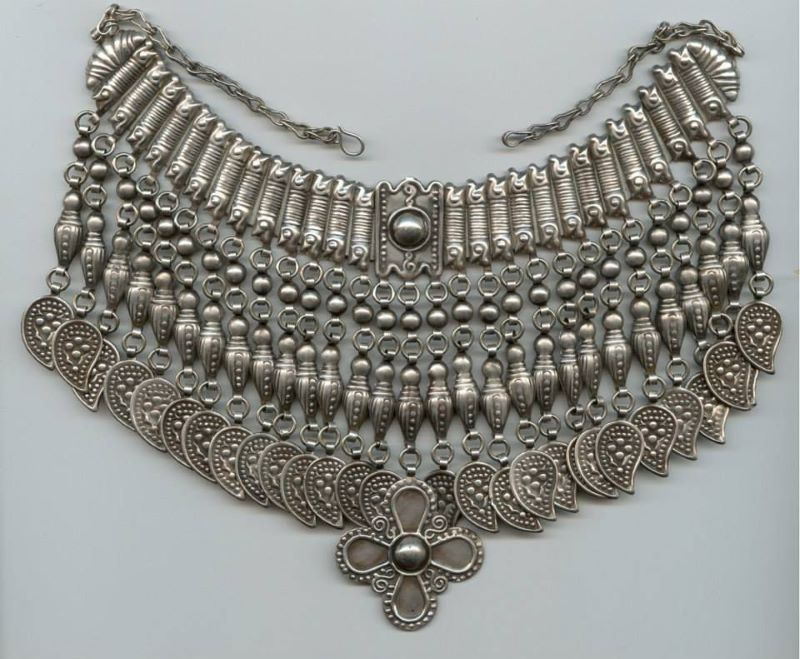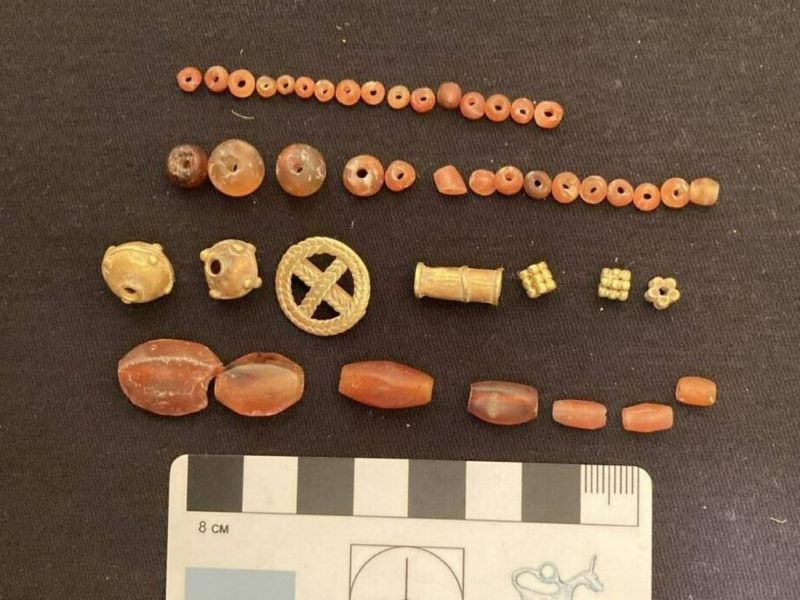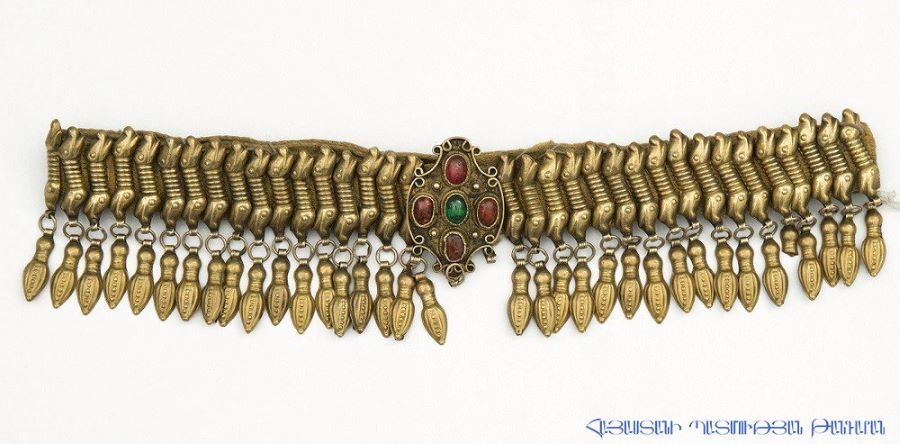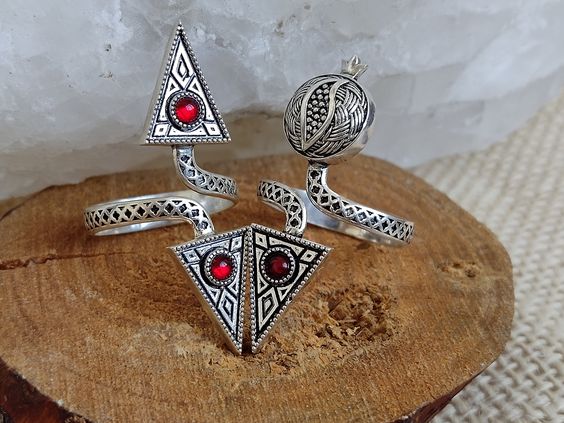
Armenia has always been a country of talented jewelers. This is also due to the reason that the first pieces of jewelry found in Armenia date back thousands of years. The history of Armenian jewelry is closely connected with the historical events happening in this area.
Moreover, modern brands are inspired by old pieces and have popularized the traditional silver jewelry that can be found in any jewelry store. Today, it’s not just about preserving cultural heritage. It has become trendy to wear traditional Armenian silver pieces with intricate ornaments. Earrings, rings, and necklaces – it’s extremely popular among young people.
For travelers seeking ancient pieces, the displays at the History Museum and other exhibitions of unique jewelry. In addition, it has become a popular souvenir to bring back home after a memorable vacation in Armenia.
Ancient History of Armenian Jewelry

The historical territory of Armenia was rich in raw materials which contributed to the development of jewelry art. From the Early Bronze Age onward, the Armenian Highland emerged as a distinctive center for jewelry making, forming a separate branch of decorative art. The cups, bowls, and gold and silver jewelry discovered across the territory showcases exquisite taste and high craftsmanship.
Gold jewelry became a fashion statement in the second quarter of the 3rd millennium BC. The earliest pieces were found at the monuments of the Early Bronze Age in Metsamor, Shengavit, and other places. For example, a joint group of Polish and Armenian archaeologists have recently found a gold necklace dating back to the late Bronze Age.
Hellenistic Armenia saw the integration of various techniques, including casting and stamping. Armenian jewelry reached new heights, with skilled craftsmen in major cities employing diverse methods such as modeling with wax, casting, and engraving.
These medieval jewelers formed organized craftsmen organizations, particularly in cities like Dvin, Van, Artsn, and Karin. Churchware and precious manuscript covers emerged as prominent examples of medieval Armenian jewelry. Moreover, Armenia’s historical position as a crossroads of trade routes facilitated cultural exchange. This sacred royal metal played a significant role in Armenia’s economic and cultural landscape, symbolizing wealth and spirituality across the centuries.
Jewelry Schools
There were several Armenian jewelry schools, each distinguished by its technological and artistic characteristics. Prominent among these were Van, Vaspurakan, and Karin. Armenian artisans, renowned for their gold and silver craftsmanship, garnered prestige in communities spanning Constantinople, Tiflis, Crimea, and Nor Jugha.
Each jewelry school specializes in unique forms and motifs, predominantly characterized by floral and geometric patterns. The Van-Vaspurakan school, for instance, was popular for silver and gilded items, including belts and jewelry with enamel.
Thus, the Karin-Akhaltsikhe-Alexandropol school was famous for producing decorative objects such as napkin holders, temple decorations, and silver and gilded belts. The Syunik-Artsakh school was focused on belts and decorations, employing granulation and blackening techniques.
Armenian jewelers, employing over a dozen techniques, crafted large objects like trays and handbags with more diverse ornamentation than smaller items like earrings and rings. It has been a gold age for Armenian jewelers who were also working with precious and semiprecious stones. These works were in high demand. Moreover, one of the best examples is a diamond-framed throne presented as a gift to Russian Tsar Alexei Mikhailovich.
During the Soviet times, Armenia was home to the largest manufacturer in the region – Yerevan Jewelry Plant which opened in 1950.
Symbols and Ornaments

Image: History Museum
Since ancient times, Armenian jewelry has held great significance and was not used merely as a decoration. The jewelry pieces served as powerful amulets and talismans, symbolizing various aspects of life. Each piece, whether for everyday, festive, or ritual occasions, carried traditional functions beyond its ornamental value.
In the past jewelry played a key role in expressing the owner’s social status and family role. Men, alongside women, used to wear silver and gold belts, where the silver symbolized masculinity, and gold denoted wealth and prosperity. Noble metals like silver and gold, coupled with precious stones such as emerald, turquoise, pearls, and pomegranate stones, were used to craft intricate pieces. They became integral components of the Armenian national costume – taraz. They were passed down as cherished wedding gifts through generations. When looking at old Armenian photos you can see women wearing accessories on their heads. It was a ribbon with silver and gold coins.
Unmarried girls usually did not wear gold belts or rings on their right hands, while married women picked snake rings, bracelets on their legs and arms as well as necklaces with a half-moon. The pomegranate, symbolizing fertility and prosperity, became a prevalent motif in Armenian jewelry. It was used in rings, pendants, bracelets, and necklaces.
A frog was considered a symbol of fertility and prosperity. Thus, newlyweds and pregnant women usually wore jewelry in the form of a frog that symbolized the idea of female fertility. Interestingly, a cross also had a fertility meaning in pre-Christian culture. There were also accessories like amulets and a blue eye charm that had to protect against evil eyes.
Modern Jewelry

Some modern Armenian brands and designers have revived traditional silver jewelry. It has become so popular that women wear silver necklaces, earrings with traditional Armenian ornaments, and vintage-style rings in their daily lives.
Moreover, certain brands founded by Armenians like Tateossian have gained worldwide recognition and have stores in London.
As for Yerevan, there are numerous stores offering gold and silver accessories. There are both boutique stores and large markets offering gold jewelry. However, one of the biggest and most popular ones is Vernissage, an open-air market where jewelers sell their pieces. Whether you are looking for a unique ring or a vintage necklace, the market offers a range of options to suit various budgets. The price for a ring can start from $10, so everyone can choose an affordable item.
